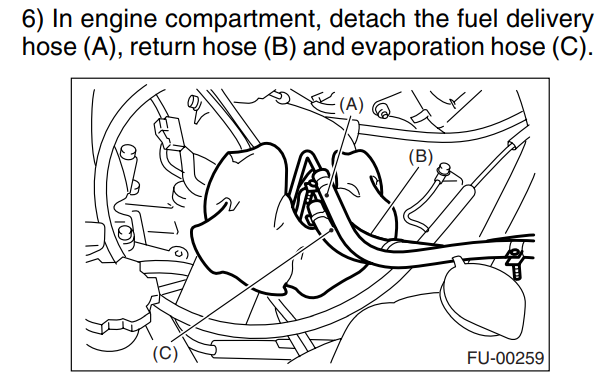
nvu
Members-
Posts
354 -
Joined
-
Last visited
-
Days Won
13
Content Type
Profiles
Forums
Gallery
Store
Everything posted by nvu
-
yes nonsynthetic, get the cheapest oil you can find for the initial startup. when it first fires, check for leaks, check for air in coolant system. all you want to do is make sure everything is in order and let the car warm up, catch it if something's wrong with the coolant bleeding and it starts overheating. coolant routing on a turbo is way more finicky than ej22. when you're sure it can idle and cooling fans cycle on and off say for 20mins.. take it for a short drive the specialty break in oils you see have high zddp content, that's used for breaking in aftermarket cams. pretty much any standard oil is fine, 5-30 is fine. i loosely follow the 5-50-500 rule; change at initial startup-5mi very cautious on everything. change again at 50mi it may have metallic specks depending on machine work. change at 500, should be fairly clean, less specks ok, more specks is problem, engine comes back out. by the 1000mi change it should be broken in and ready for high rpm and boost
-
no honing needed after the first 50mi change and all looks good, it's a turbo so give it mild boost to seat the rings. lots of engine braking in between. running conventional oil until you hit the 1000mi mark is fine. never heard of subaru rings needing a tool, i've always put them on by hand. do check the ring gaps on the block before putting them on the piston.
-
Good robot, clicked on its profile, all posts have something to mention about inverters. Google the exact first sentence and look there's an exact match... and the second sentence https://www.google.com/search?q="The+more+expensive+pure+sine+wave+inverters+have+the+same+quality+AC+electricity+that’s+supplied+to+a+home+receptacle." https://www.google.com/search?q=Works+great!+Belkin+AC+Anywhere+power+inverter+exactly+what+i+was+expecting+and+more!+the+only+downfalls+are+that+its+a+bit+pricey+and+it+takes+up+a+lot+of+room%2C+but+its+worth+it. https://www.google.com/search?q="One+way+to+go+is+to+find+an+isolation+transformer+to+go+between+the+inverter" That was fun... Pretty sure familyhandyman, walmart, and okshooters aren't in on this. Not even mad, pretty good programming.
-
Knob runs into some plastic or rubber funnel, just tighten it until it feels right and align it. If it's really sloppy, like inches wobbly when in gear, likely the shift linkage U joint. Probably the most annoying part you'll run into is tapping out the 2 roll pins, especially with no lift. If you're gonna be working on the floor, it's a good idea to wear a face shield. Keeps dirt and hammers away. This video is pretty complete on what you're planning to do.
-
If you're in this far already, might as well take off the pistons and replace the rings. You don't have to split the block for this. I've used NPR rings in the past since they sell pregapped sets. But seems like prices for EJ22 rings are insane now, 200-400 for a set of rings?! Used to be 50. Dunno who makes quality pregapped sets these days?
-
On my 98 impreza outback sport, it came with a "subaru factory alarm" sticker on the window. The keyfob had the subaru logo. But taking things apart it looked like a generic code-alarm unit. It was wiretapped into the harness, no plugs on the car. There was a subaru security booklet that came with the car. I bought the car used sometime in 2017. Guessing subaru rebadged the code-alarm units as a dealer installed option back in the day.
-
Maybe it's not brakes but balljoints or some other suspension bits? Could be that braking puts load on the suspension and stops the rattling. Oh just saw the part where you found some caliper play by hand. Could be a worn wheel bearing causing pad knockback as the rotor wobbles when you go through bumps.
-
It's conical and not press fit, but likely be seized in there. Simplest way is undo the cotter pin and knock it out with a pickle fork. The oem front-rear bushing has the rubber fused to the outer casing and the center pin. The rubber is not solid and has some empty chambers. The center pin does not rotate freely, but does have some give. Over rotating it either way would eventually rip the rubber. This is for oem style bushings, aftermarket poly ones do rotate in the center and don't care how you tighten them. That reminds me, the captive nuts in the frame, if you're in a rust area those like to crossthread when you're tightening. Blow out the holes and run the bolts in and out of the frame to make sure they're smooth before attaching everything.
-
1. It's safer to pop out the lower ball joint and remove tension from the LCA. It could be done without this step, but you're going to need another jack and/or prybar to line things up. 2. If you popped out the ball joint, you can just unbolt the rear bushing and not worry about anything popping in tension. Unhooking the swaybar endlink would give you more room to work if necessary. 3. Scribe the line and copy it to the new bushing if you intend to final torque the big bolt with the car in the air. Or you could snug up the bolt, lower the car to the ground, then final torque it there.
-
dash lights
nvu replied to sirtokesalot's topic in 1990 to Present Legacy, Impreza, Outback, Forester, Baja, WRX&WrxSTI, SVX
You could, though depending on the led and resistor picked, it may not light up at all if there's a fault or light up all the time when there's no fault. It might not detect the case of the alternator sending overvoltage as the led doesn't light up in reverse current situations.



